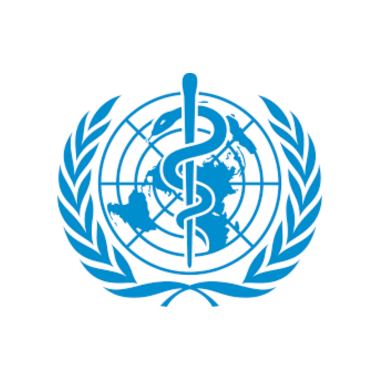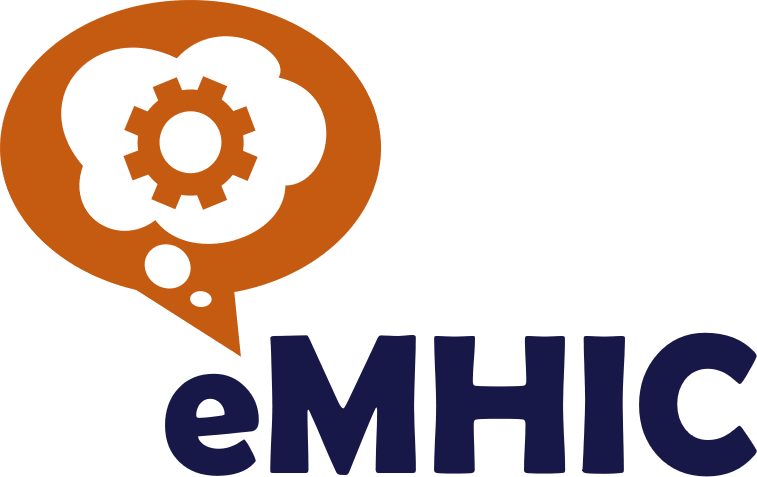The World Health Organization (WHO) has released its Regional Framework for the Future of Mental Health in the Western Pacific 2023-2030. The framework acknowledges the importance of mental health for overall well-being. However, countries in the Western Pacific face unique challenges, including their vulnerability to climate-related issues. There are also vast disparities in access to mental health care due to the diverse range of healthcare systems, which vary from advanced to remote settings. Further, the region is affected by rapid urbanisation, social vulnerabilities (including poverty, economic pressures, and increasing drug use), and the ongoing impacts of the COVID-19 pandemic, all of which further impact mental health.
The Regional Framework emphasises four “enabling strategies” that serve as the foundation for key actions to realise its vision for the future of mental health. One of these core strategies is innovation in mental health through the utilisation of digital technologies. This approach recognises the potential of technology and social innovation to improve different aspects of mental health. It includes expanding digital mental health solutions and ensuring that individuals who are currently excluded from the healthcare system can benefit from them. By leveraging digital platforms, accessibility to mental health services can be enhanced, a continuum of care can be provided, and the effectiveness of mental health interventions can be increased. This digital focus aligns with the goal of creating an environment that transforms mental health care and promotes well-being for everyone in the region.
Key Takeaways
- “…evidence-based strategies for reaching the unreached include: mobilizing traditional and spiritual or religious leaders who can help reduce stigma and other barriers to access; harnessing social capital in rural areas to maximize the protective and supportive impact of psychosocial interventions; and deploying digital mental health apps to overcome language barriers and logistical constraints in remote settings.”
- “Telepsychiatry” has been in development for some time now, and the COVID-19 pandemic is likely to further promote the use of this intervention medium [across the Western Pacific region].”
- “…the exciting frontiers offered by digital mental health, open up many possibilities for delivering and developing interventions, engaging various community voices and people with lived experience, and building the capacity of the next-generation mental health workforce.”
- “…innovation has the potential to revolutionize all aspects of mental health – from promotion to prevention, management and recovery. This includes the development and scale-up of digital mental health tools, platforms and approaches – such as mobile technology, artificial intelligence, social media, data science, etc. – to enhance and transform mental health. Innovation also refers to social innovations that are grounded in local contexts, wisdom and insights, such as Indigenous models of care that may be more acceptable to the community.”
- “A robust digital infrastructure enabled the Government of Hong Kong SAR (China) to reach the public with key messages and various other initiatives to enhance mental health literacy and encourage appropriate health-seeking behaviour. Investments in social marketing and the development of digital resources, combined with the involvement of public personalities (artists, influencers, etc.) and civil society organizations in campaign implementation, contributed to the wide reach and impact of mental health promotion activities.”
References
- Urban health. In: World Health Organization [website]. 29 October 2021. Geneva: World Health Organization; 2021 (https://www.who.int/news-room/fact-sheets/detail/urban-health, accessed 31 May 2022).
- Regional framework for urban health in the Western Pacific 2016–2020: healthy and resilient cities. Manila: WHO Regional Office for the Western Pacific; 2016.
- Yang J, Siri JG, Remais JV, Cheng Q, Zhang H, Chan KKY, et al. The Tsinghua–Lancet Commission on Healthy Cities in China: unlocking the power of cities for a healthy China. Lancet. 2018;391(10135):2140–84. doi:10.1016/S0140-6736(18)30486-0.
- Gruebner O, Rapp MA, Adli M, Kluge U, Galea S, Heinz A. Cities and mental health. Dtsch Arztebl Int. 2017;114(8):121–7. doi:10.3238/arztebl.2017.0121.
- Kasai T. Preparing for population ageing in the Western Pacific Region. Lancet Reg Health West Pac. 2020;6:100069. doi:10.1016/j.lanwpc.2020.100069.
- Prince M, Wimo A, Guerchet M, Ali G-C, Wu Y-T, Prina M. World Alzheimer Report 2015: the global impact of dementia – an analysis of prevalence, incidence, cost and trends. London: Alzheimer’s Disease International; 2015.
- Wu B. Social isolation and loneliness among older adults in the context of COVID-19: a global challenge. Glob Health Res Policy. 2020;5:27. doi:10.1186/s41256-020-00154-3.
- Regional action plan on healthy ageing in the Western Pacific. Manila: WHO Regional Office for the Western Pacific; 2020.
- Spanakis P, Peckham E, Mathers A, Shiers D, Gilbody S. The digital divide: amplifying health inequalities for people with severe mental illness in the time of COVID-19. Br J Psychiatry. 2021;219(4):529–31. doi:10.1192/bjp.2021.56.
- Philbin MM, Parish C, Pereyra M, Feaster DJ, Cohen M, Wingood G, et al. Health disparities and the digital divide: the relationship between communication inequalities and quality of life among women in a nationwide prospective cohort study in the United States. J Health Commun. 2019;24(4):405–12. doi:10.1080/10810730.2019.1630524.
- Nixon CL. Current perspectives: the impact of cyberbullying on adolescent health. Adolesc Health Med Ther. 2014;5:143–58. doi:10.2147/AHMT.S36456.
- Su Z, McDonnell D, Wen J, Kozak M, Abbas J, Šegalo S, et al. Mental health consequences of COVID-19 media coverage: the need for effective crisis communication practices. Global Health. 2021;17(1):4. doi:10.1186/s12992-020-00654-4.
- Lund C. Poverty and mental health: a review of practice and policies. Neuropsychiatry. 2012;2(3):213–9.
- Banerjee S, Ng P. Why can’t dynamic Asia-Pacific beat poverty? In: United Nations Economic and Social Commission for Asia and the Pacific [website]. 5 July 2019. Bangkok: ESCAP; 2019 (https://www.unescap.org/blog/why-cant-dynamic-asia-pacific-beat-poverty, accessed 31 May 2022).
- Patel V, Kleinman A. Poverty and common mental disorders in developing countries. Bull World Health Organ. 2003;81(8):609–15.
- World drug report 2019. New York: United Nations Office on Drugs and Crime; 2019.
- Opioid overdose. In: World Health Organization [website]. 4 August 2021. Geneva: World Health Organization; 2021 (https://www.who.int/news-room/fact-sheets/detail/opioid-overdose, accessed 31 May 2022).
- Why is there comorbidity between substance use disorders and mental illnesses? In: Common comorbidities with substance use disorders research report. Bethesda: National Institute on Drug Abuse; 2020 (https://nida.nih.gov/publications/research-reports/common-comorbiditiessubstance-use-disorders/why-there-comorbidity-between-substance-use-disorders-mentalillnesses, accessed 31 May 2022).
- Baskin-Sommers A, Sommers I. The co-occurrence of substance use and high-risk behaviors. J Adolesc Health. 2006;38(5):609–11. doi:10.1016/j.jadohealth.2005.07.010.
- Western Pacific regional framework for action on health and environment on a changing planet. Manila: WHO Regional Office for the Western Pacific; 2017.
- Hayes K, Blashki G, Wiseman J, Burke S, Reifels L. Climate change and mental health: risks, impacts and priority actions. Int J Ment Health Sys. 2018;12:28. doi:10.1186/s13033-018-0210-6.
- Gibson KE, Barnett J, Haslam N, Kaplan I. The mental health impacts of climate change: findings from a Pacific island atoll nation. J Anxiety Disord. 2020;73:102237. doi:10.1016/j. janxdis.2020.102237.
- GBD 2019 Risk Factors Collaborators. Global burden of 87 risk factors in 204 countries and territories, 1990–2019: a systematic analysis for the Global Burden of Disease Study 2019. Lancet. 2020;396(10258):1223–49. doi:10.1016/S0140-6736(20)30752-2.
- McGorry PD, Mei C, Chanen A, Hodges C, Alvarez-Jimenez M, Killackey E. Designing and scaling up integrated youth mental health care. World Psychiatry. 2022;21(1):61–76. doi:10.1002/ wps.20938.
- Kieling C, Salum GA, Pan PM, Bressan RA. Youth mental health services: the right time for a global reach. World Psychiatry. 2022;21(1):86–7. doi:10.1002/wps.20933.
- Kõlves K, Mathieu S, Fleischmann A. Suicide and self-harm surveillance across the Western Pacific: a call for action. Lancet Reg Health West Pac. 2022;19:100367. doi:10.1016/j.lanwpc.2021.100367.
- De Leo D, Milner A, Xiangdong W. Suicidal behavior in the Western Pacific region: characteristics and trends. Suicide Life Threat Behav. 2009;39(1):72–81. doi:10.1521/suli.2009.39.1.72.
- Ayhan CHB, Bilgin H, Uluman OT, Sukut O, Yilmaz S, Buzlu S. A systematic review of the discrimination against sexual and gender minority in health care settings. Int J Health Serv. 2020;50(1):44–61. doi:10.1177/0020731419885093.
- White Hughto JM, Reisner SL, Pachankis JE. Transgender stigma and health: a critical review of stigma determinants, mechanisms, and interventions. Soc Sci Med. 2015;147:222–31. doi:10.1016/j.socscimed.2015.11.010.
- Reisner SL, Poteat T, Keatley J, Cabral M, Mothopeng T, Dunham E, et al. Global health burden and needs of transgender populations: a review. Lancet. 2016;388(10042):412–36. doi:10.1016/S0140-6736(16)00684-X.
- COVID-19 Mental Health Disorders Collaborators. Global prevalence and burden of depressive and anxiety disorders in 204 countries and territories in 2020 due to the COVID-19 pandemic. Lancet. 2021;398(10312):1700–12. doi:10.1016/S0140-6736(21)02143-7.
- Mental health and COVID-19: early evidence of the pandemic’s impact: scientific brief, 2 March Geneva: World Health Organization; 2022.
- Loades ME, Chatburn E, Higson-Sweeney N, Reynolds S, Shafran R, Brigden A, et al. Rapid systematic review: the impact of social isolation and loneliness on the mental health of children and adolescents in the context of COVID-19. J Am Acad Child Adolesc Psychiatry. 2020;59(11):1218–39.e3. doi:10.1016/j.jaac.2020.05.009.
- The impact of COVID-19 on mental, neurological and substance use services: results of a rapid assessment. Geneva: World Health Organization; 2020.
- Mental health atlas 2020. Geneva: World Health Organization; 2021.
- For the future: towards the healthiest and safest region: a vision for the WHO work with Member States and partners in the Western Pacific. Manila: WHO Regional Office for the Western Pacific; 2020.
- Mental health: fact sheet on Sustainable Development Goals (SDGs): health targets. Copenhagen: WHO Regional Office for Europe; 2018.
- Patel V, Saxena S, Lund C, Thornicroft G, Baingana F, Bolton P, et al. The Lancet Commission on global mental health and sustainable development. Lancet. 2018;392(10157):1553–98. doi:10.1016/S0140-6736(18)31612-X.
- Comprehensive mental health action plan 2013–2030. Geneva: World Health Organization; 2021.
- Sartorius N. Fighting for mental health: a personal view. Cambridge: Cambridge University Press; 2002.
- Herrman H, Saxena S, Moodie R. Promoting mental health: concepts, emerging evidence, practice. Geneva: World Health Organization; 2004.
- Pathare S, Burgess RA, Collins PY. World Mental Health Day: prioritise social justice, not only access to care. Lancet. 2021;398(10314):1859–60. doi:10.1016/S0140-6736(21)02232-7.
- Nishtar S, Niinistö S, Sirisena M, Vázquez T, Skvortsova V, Rubinstein A, et al. Time to deliver: report of the WHO Independent High-Level Commission on NCDs. Lancet. 2018;392(10143):245-doi:10.1016/S0140-6736(18)31258-3.
- Woelbert E, Lundell-Smith K, White R, Kemmer D. Accounting for mental health research funding: developing a quantitative baseline of global investments. Lancet Psychiatry. 2021;8(3):250–8. doi:10.1016/S2215-0366(20)30469-7.
- Kola L, Kohrt BA, Hanlon C, Naslund JA, Sikander S, Balaji M, et al. COVID-19 mental health impact and responses in low-income and middle-income countries: reimagining global mental health. Lancet Psychiatry. 2021;8(6):535–50. doi:10.1016/S2215-0366(21)00025-0.
- Lund C, Brooke-Sumner C, Baingana F, Baron EC, Breuer E, et al. Social determinants of mental disorders and the Sustainable Development Goals: a systematic review of reviews. Lancet Psychiatry. 2018;5(4):357–69. doi:10.1016/S2215-0366(18)30060-9.
- Herrman H, Jané-Llopis E. The status of mental health promotion. Public Health Rev. 2012;34(2):1–21.
- Burgess RA, Jain S, Petersen I, Lund C. Social interventions: a new era for global mental health? Lancet Psychiatry. 2020;7(2):118–9. doi:10.1016/S2215-0366(19)30397-9.
- Rose N, Manning N, Bentall R, Bhui K, Burgess R, Carr S, et al. The social underpinnings of mental distress in the time of COVID-19 – time for urgent action. Wellcome Open Res. 2020;5:166. doi:10.12688/wellcomeopenres.16123.1.
- Burgess RA, Ní Chobhthaigh S, Lee S, Pathare S, Iemmi V, Lund C. Scoping review protocol: establishing a socio-political economy of global mental health. Charlottesville: OSF Registries– Center for Open Science; 2022.
- Burgess RA, Fonseca L. Re-thinking recovery in post-conflict settings: supporting the mental well-being of communities in Colombia. Glob Public Health. 2020;15(2):200–19. doi:10.1080/17441692.2019.1663547.
- Vaillant GE. Positive mental health: is there a cross-cultural definition? World Psychiatry. 2012;11(2):93–9. doi:10.1016/j.wpsyc.2012.05.006.
- Policy brief: COVID-19 and the need for action on mental health. New York: United Nations; 2020.
- Mishra C, Rath N. Social solidarity during a pandemic: through and beyond Durkheimian lens. SSHO. 2020;2(1):100079.
- Bowe M, Wakefield JRH, Kellezi B, Stevenson C, McNamara N, Jones BA, et al. The mental health benefits of community helping during crisis: Coordinated helping, community identification and sense of unity during the COVID-19 pandemic. J Community Appl Soc Psychol. 2022May-Jun;32(3):521–35. doi:10.1002/casp.2520.





